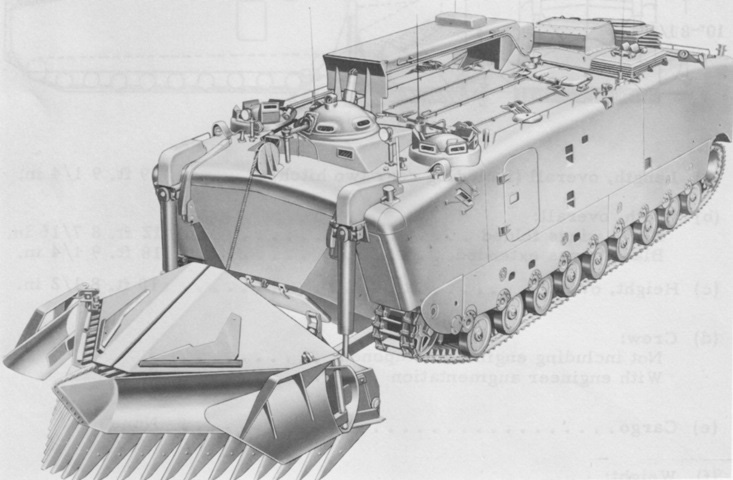
Landing Vehicle, Tracked, Engineer, Mark 1.

The lack of grilles for recessed radiator compartments on the side of this vehicle indicate that it is powered by the AVI-1790-8 engine. The lifting mechanism for the line charge pallets takes up a good portion of the length of the roof. The squat raised louvres just behind the lifting mechanism in the image are the portside armored cover plate for the cooling air intake valve; a similar structure was found on the opposite site. To the rear of the roof are the armored cover plates for the cooling air exhaust valves, and just in front of these is the superstructure for the engine exhaust outlets. The escape hatches have been moved forward, and can be located by the hinges on the side of the vehicle below the driver's cupola. Just in front of and below the driver's cupola was the mounting position of a side periscope. (Picture from FMFM 9-2 Amphibian Vehicles.)
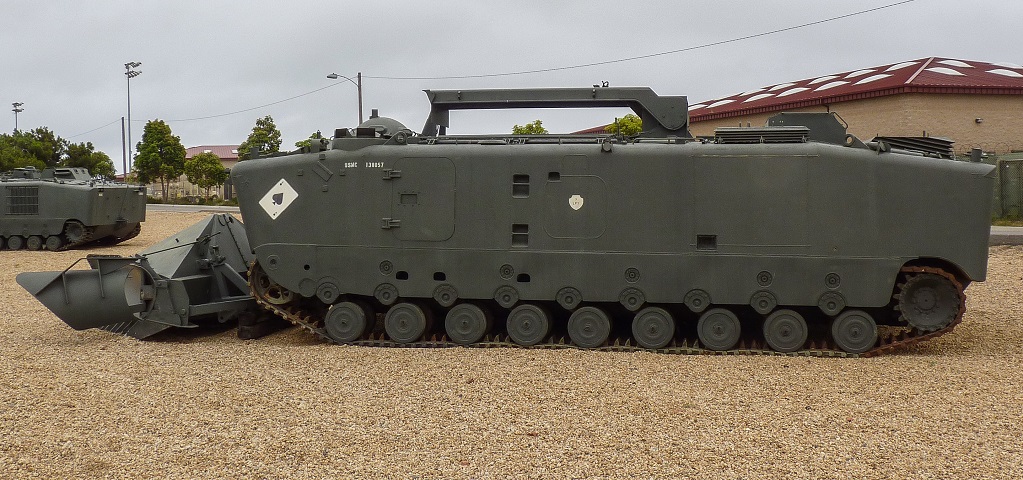
A similar vehicle is seen here from the side. (Photo by Paul Hannah.)
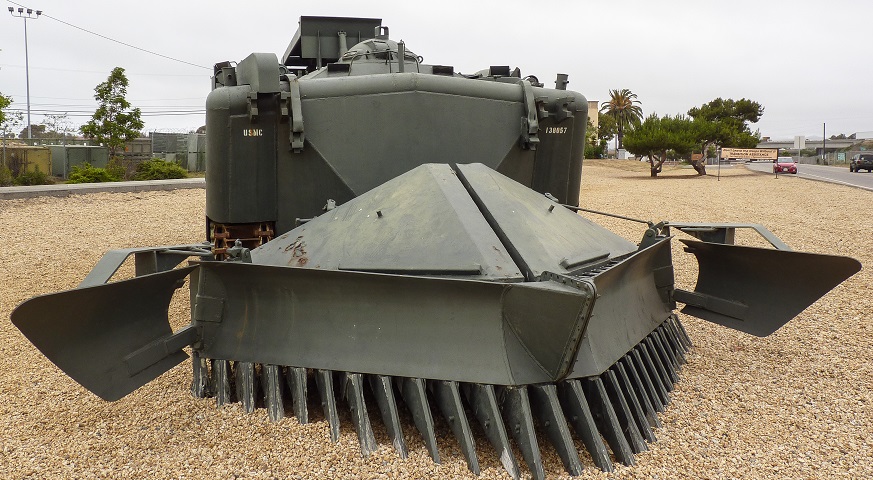
The massive and imposing mine excavator blade assembly dominates the front of the vehicle. The teeth of the blade are aluminum and can be easily removed by disconnecting a retaining pin. The side wings can be folded forward to conserve space; they are sort of halfway between being extended and folded forward on this vehicle. The blade weighs ~10,000lb (~4500kg), and is 152.4375" (387.1913cm) wide with the wings folded and 225.25" (572.14cm) wide with them extended. The large pyramidal structures behind the blade are its foam-filled buoyancy tanks. The stout latches that hold the blade when it is raised remain on the bow, but the two hydraulic cylinders for raising and lowering are missing on this vehicle. The machine gun cupola mounted between the driver's and commander's positions is traversed a bit to the vehicle's left, and the guard for the sighting periscope M25C can be made out on top of the cupola. A periscope is installed below the machine gun cupola on each side. (Photo by Paul Hannah.)

The excavator can be seen in use here. (Picture from FMFM 9-2 Amphibian Vehicles.)
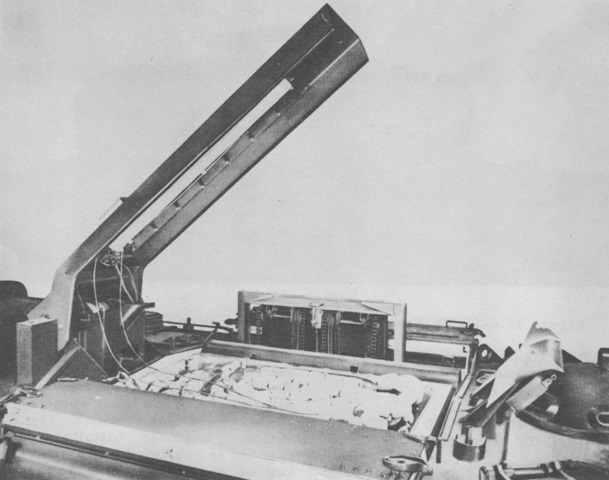
The line charge was carried in a steel pallet that served as a storage container. Though protected by a steel and plywood cover, the pallet was not completely waterproof. The pallet weighed 3,100lb (1,400kg), and was 93" (240cm) long, 53" (130cm) wide, and 24" (61cm) tall. The line charge and rocket are shown in this image ready to fire. (Picture from FMFM 9-2 Amphibian Vehicles.)
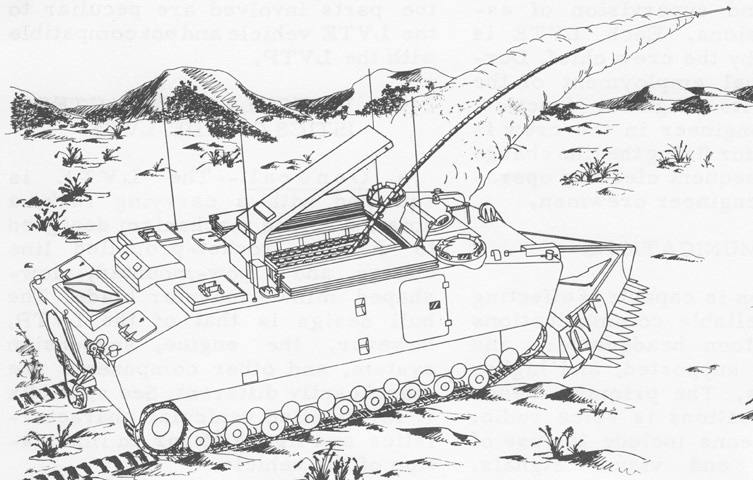
The rocket could be fired from the ground as well as from the vehicle, and the explosive length was 350' (110m). (Picture from FMFM 9-2 Amphibian Vehicles.)
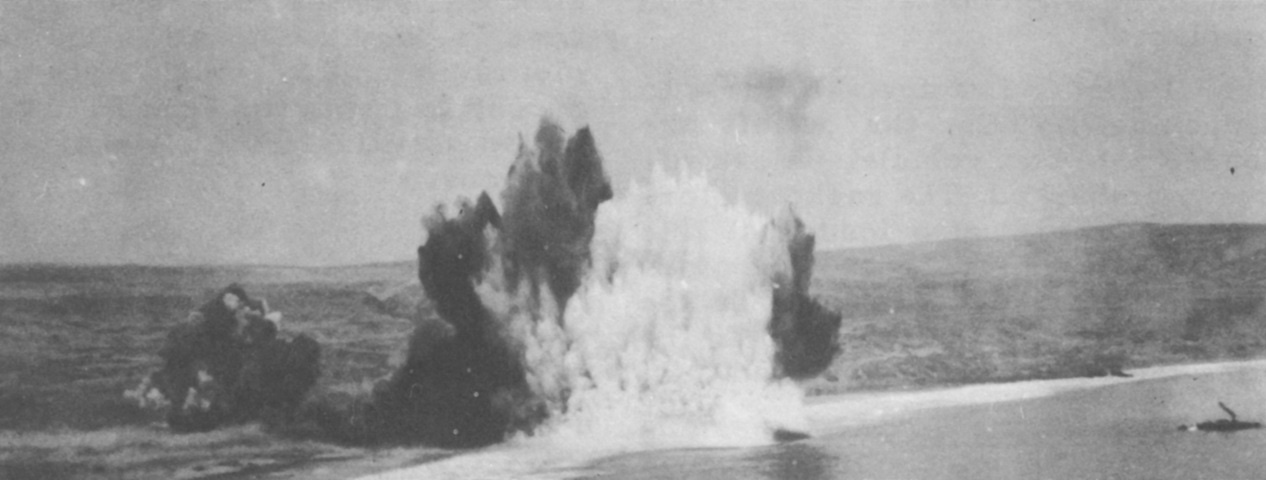
The line charges each contained 1,750lb (794kg) of plastic explosive, and could generally clear a lane as wide as the vehicle and 90% as long as the line charges, or around 600' (180m). The vehicle would employ the excavator blade through the lane cleared by the line charges to ensure the safety of follow-on traffic. (Picture from FMFM 9-2 Amphibian Vehicles.)
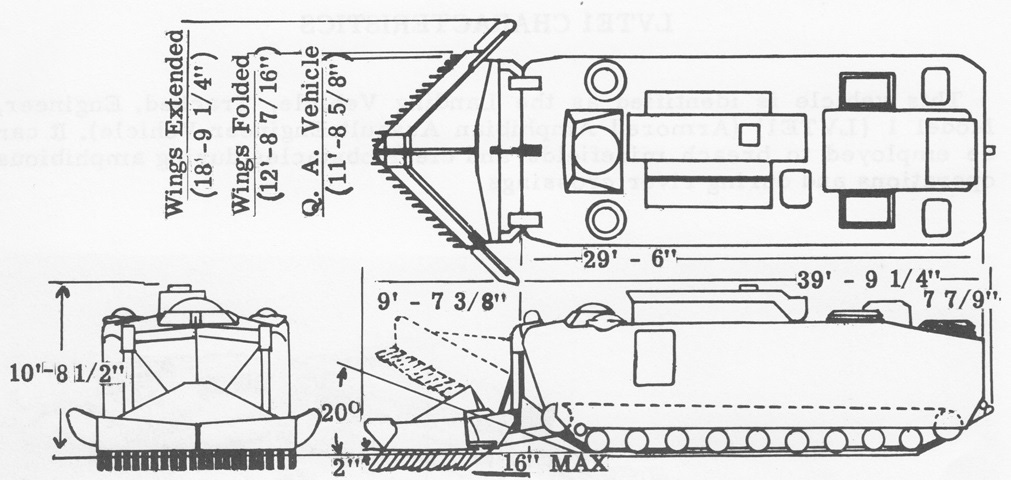
The dimensions of the vehicle with the excavator in various positions are drawn here. (Picture from FMFM 9-2 Amphibian Vehicles.)